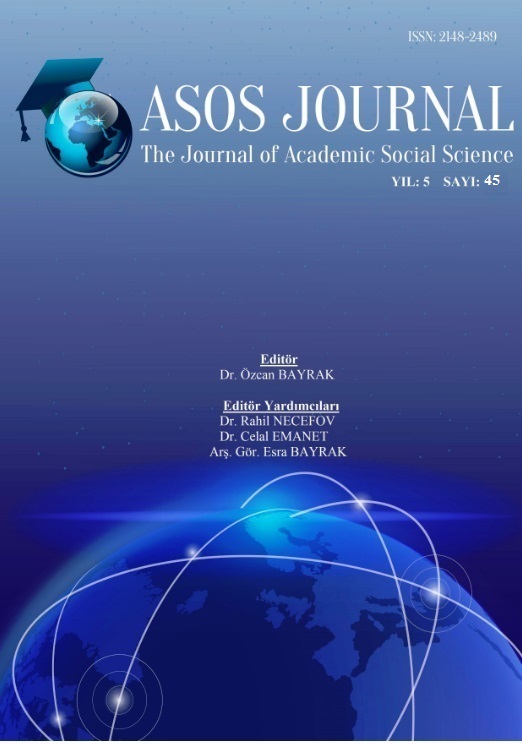Author :
Abstract
Ağız çalışmaları Türk dili araştırmaları açısından önemli bir yere sahiptir. Türkçenin yazılı belgelerle takip edilebilen ilk dönemlerinde şimdiki zaman kipi olarak çoğu kez geniş zaman bazen de -yur ekinin kullanıldığı tespit edilmiştir. Daha sonraki dönemlere bakıldığında bu iki ekin yanı sıra başka kip eklerinin ve tasvir fiilleriyle oluşturulan biçimlerin şimdiki zaman kipi olarak kullanıldığı görülmektedir. Bu günkü Türk lehçelerinde dört beş temel üzerine oturtulan varyantlar şimdiki zaman kipi olarak kullanılmaktadır. Bu çalışmada Orta Anadolu ağızları üzerine yapılan bilimsel çalışmalar incelenerek bölge ağzında kullanılan şimdiki zaman ekleri tespit edilmiştir. Bu tespit neticesinde bölge ağızlarında daha çok -yor şimdiki zaman eki varyantlarının kullanıldığı Eski Türkçeden beri kullanılan geniş zaman ekinin nadir olarak kullanıldığı tespit edilmiştir. Eski Türkçede kullanılan -yur şimdiki zaman ekinin bazen kullanıldığı, Niğde ve Aksaray illerinde bazı yöre ağızlarında da tasvir fiilleriyle kurulan şimdiki zaman ekinin kullanıldığı tespit edilmiştir. Bunun yanı sıra bölge ağzında -yor şimdiki zaman eki varyantlarının ölçünlü dilin etkisiyle değil asli şimdiki zaman eki olarak kullanıldığı tespit edilmiştir.
Keywords
Abstract
Dialect studies have an important place in terms of Turkish language research. In the early periods when Turkish can be followed by written documents, it has been determined that The Present Simple mode is often used and “-yur” suffix is sometimes used as the present continuous tense mode. Looking at the later periods, it is seen that as well as these two suffixes, other mode suffixes and the forms formed by the verbs of description are used as the present continuous tense mode. Variants based on four or five bases in today's Turkish dialects are used as the present continuous tense mode. In this study, the present continuous tense suffixes used in the region dialect has been determined by examining the scientific studies on the Central Anatolian dialects. As a result of this detection, it has been determined that in the region dialects, the variants of “-yor” present continuous suffix are used mostly, and the present simple suffix, which has been used since The Old Turkish, is rarely used. It has been determined that “-yur” present continuous suffix, which is used in The Old Turkish, is sometimes used, and in Nigde and Aksaray provinces, the present continuous suffix formed by the verbs of description is used in the dialects of some regions. Besides this, it has been determined that in the dialect of the region, the variants of present continuous tense are used not with the effect of the standart language but as the original present continuous suffix.





